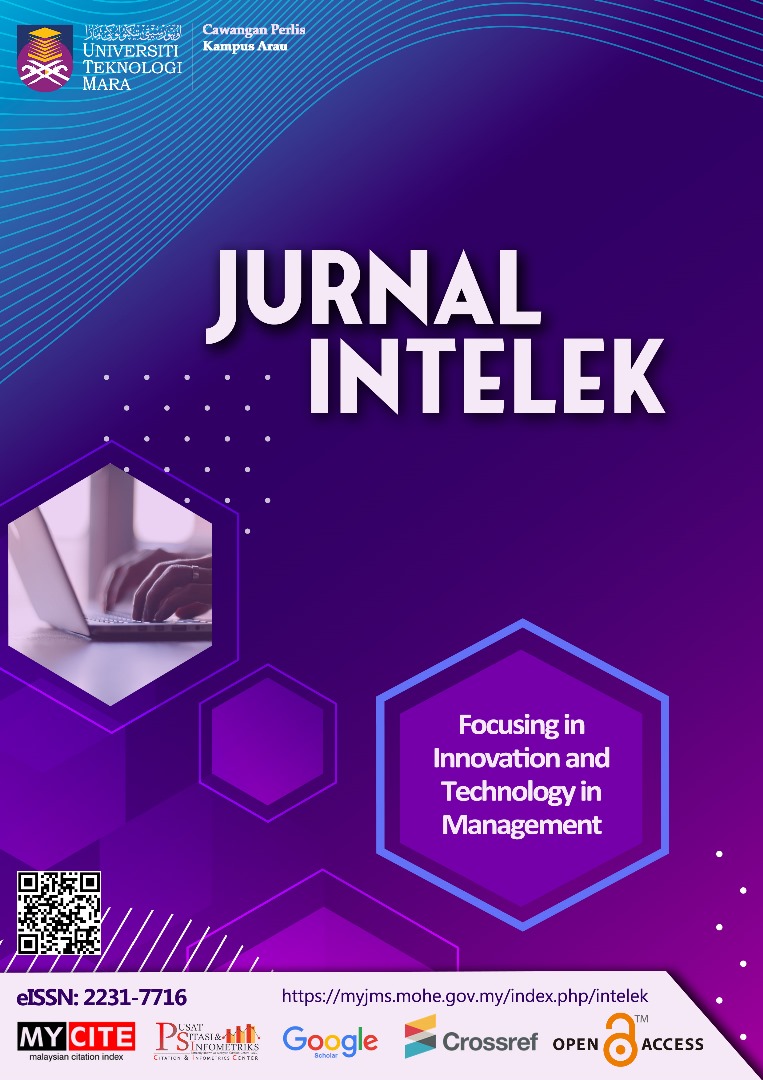Bibliometric Analysis Of Financial Literacy Level
DOI:
https://doi.org/10.24191/ji.v20i1.4425Keywords:
bibliometric analysis, financial literacy level, Scopus database, VOSviewerAbstract
Financial literacy level refers to the overall understanding of an individual's competency in managing finances. This article presents a bibliometric study on financial literacy. It was conducted using VOSviewer 1.6.18 to assess worldwide research trends, focusing on publication growth, publishing outputs by country, themes of interest, and co-occurrences of author keywords. Bibliometrics is a relatively new research methodology that has grown into a well-established aspect of information research and a quantitative approach to document description. The Scopus database obtained 563 papers published between 2019 and 2023. The literature search statistics indicate a decreasing trend in publishing outputs. Most of the papers came from scholars in the United States, followed by India and China. The keyword "financial literacy" appears most frequently in articles, followed by "financial knowledge." A closer examination of author keyword co-occurrences revealed that "financial literacy" had 242 instances. These findings could guide future research into under-explored aspects of financial literacy.
References
Alam, A., Fianto, B. A., Ratnasari, R. T., Ahmi, A., & Handayani, F. P. (2023). History and Development of Takaful Research: A Bibliometric Review. SAGE Open, 13(3), 1–20. https://doi.org/10.1177/21582440231184852
Damayanti, S., Rahmawati, A., & Wihandaru. (2023). A bibliometric analysis VOSviewer of publication on financial literacy and investment decision. Multidisciplinary Reviews, 6(4). https://doi.org/10.31893/multirev.2023043
Demartini, M. C., and Beretta, V. (2020). Intellectual capital and SMEs’ performance: A structured literature review. Journal of Small Business Management, 58(2), 288-332. https://doi.org/10.1080/00 472778.2019.1659680
Hilgert, M.A., Hogarth, J.M. and Beverly, S.G. (2003), “Household financial management: the connection between knowledge and behavior”, Federal Reserve Bulletin HeinOnline, Vol. 89, p. 309.
Idris, A., Rahmawati, A., & Surwanti, A. (2023). Theoretical Models of Financial Literacy: A Bibliometric Analysis and Literature Review. Asian Journal of Business and Accounting, 16(1), 89–127. https://doi.org/10.22452/ajba.vol16no1.4
Ingale, K.K. and Paluri, R.A. (2022), "Financial literacy and financial behaviour: a bibliometric analysis", Review of Behavioral Finance, Vol. 14 No. 1, pp. 130-154. https://doi.org/10.1108/RBF-06-2020-0141
Litvinova, S. A. (2018). the Development of a Financial Literacy System in Russia. CBU International Conference Proceedings, 6, 314–318. https://doi.org/10.12955/cbup.v6.1175
Mihalčová, B., Csikósová, A., & Antošová, M. (2014). Financial Literacy – The Urgent Need Today. Procedia - Social and Behavioral Sciences, 109, 317–321. https://doi.org/10.1016/j.sbspro.2013.12.464
Muñoz-Céspedes, E., Ibar-Alonso, R., & Ros, S. de L. (2021). Financial literacy and sustainable consumer behavior. Sustainability (Switzerland), 13(16). https://doi.org/10.3390/su13169145
Nguyen, T. A. N., & Nguyen, K. M. (2020). Role of financial literacy and peer effect in promotion of financial market participation: Empirical evidence in Vietnam. Journal of Asian Finance, Economics and Business, 7(6), 1–8. https://doi.org/10.13106/JAFEB.2020.VOL7.NO6.001
President’s Advisory Council on Financial Literacy (PACFL) (2008), “2008 annual report to the president”, available at: http://www.treasury.gov/resource-center/financial education/ Documents/PACFL_ANNUAL_REPORT_1-16-09.pdf (accessed 06 September 2013)
Safira, F. T., Purwidianti, W., Tubastuvi, N., & Alfalisyado, A. (2023). Financial Literacy, Financial Technology, and Financial Satisfaction: Explorasi the Mediation Effect of Financial Inclusion. Saudi Journal of Economics and Finance, 7(12), 576–586. https://doi.org/10.36348/sjef.2023.v07i12.002
Sekita, S., Kakkar, V., & Ogaki, M. (2022). Wealth, Financial Literacy and Behavioral Biases in Japan: the Effects of Various Types of Financial Literacy. Journal of the Japanese and International Economies, 64(July 2021), 101190. https://doi.org/10.1016/j.jjie.2021.101190
Vijay Kumar, V. M., & Senthil Kumar, J. P. (2023). Insights on financial literacy: a bibliometric analysis. Managerial Finance, 49(7), 1169–1201. https://doi.org/10.1108/MF-08-2022-0371
Warner, C. K., & Agnello, M. F. (2012). Intergenerational financial literacy: The case for teaching sustainable financial decision making in schools. Citizenship, Social and Economics Education, 11(3), 202–212. https://doi.org/10.2304/csee.2012.11.3.202
Xu, S., Ali, S. T., Yang, Z., & Li, Y. (2022). Effect of household’s financial literacy on pension decision making: evidence from China’s new rural pension program. Kybernetes, 21. https://doi.org/10.1108/K-03-2022-0321
Downloads
Published
Issue
Section
License
Copyright (c) 2025 Jurnal Intelek

This work is licensed under a Creative Commons Attribution-ShareAlike 4.0 International License.











